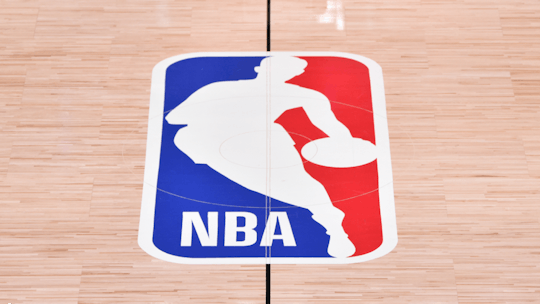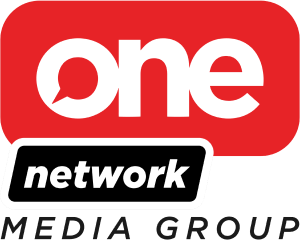Jerry West pulls up the bottom of his pants leg and points to make a point.
“I can’t escape it because every morning when I get up and put these on,” he says, meaning a pair of NBA-issued socks, “it’s staring at me.”
The socks are embroidered with the NBA logo and, well, Jerry West might as well be looking in the mirror. After all, the Hall of Famer has been depicted as The Logo — the silhouette outline that captures him dribbling with his left hand while dashing to the rim.
This illustration of West was cropped from a cover photo of him with the Lakers taken by Wen Roberts and used in Sport Magazine, which was popular in the 1960s. Long story short, the NBA logo is iconic and instantly recognized, though never acknowledged by the league that it is indeed West. There is the potential for copyright issues if it did; at least that’s the long-held belief for the lack of official word.
But the identity of the dribbling player has been a poorly kept secret for over 50 years.
West has had a complicated relationship with the logo. For many years, he always demurred whenever asked about it. At times, he said the logo was burdensome; other times, he wished nobody would bring it up. And yet, the photo that inspired the logo was also used as the cover jacket for his recent autobiography “West By West”, which he obviously approved.
“It almost feels like I have to apologize for that symbol,” he said recently. “It’s not fun.”
In the last few years, the logo became entangled in a social media debate: Should it be updated to reflect the modern-day game? Maybe that of a dunking player, or a jump-shooting player … or a player other than Jerry West?
In the wake of recent social justice awareness, some suggested the logo should be that of a Black player — and therefore more representative of the league demographics — and the late Kobe Bryant emerged as a candidate.
Nets guard Kyrie Irving went a step further by demanding a logo change to Kobe, turning to Instagram with the message “Black Kings Built This League,” although that didn’t exactly lead to a massive movement among his peers. Commissioner Adam Silver put the issue to rest this year by flatly saying there were no plans in place for a logo change.
West said publicly he wouldn’t have a problem with a change, although people close to West believe it would disappoint him if it ever changed.
Anyway, West says: “I wake up and I see it. I go to a game and I see it. It’s everywhere. I can’t get away from it. I just shake my head.”
The red, white and blue logo came to life in 1969 by Alan Siegel, a branding pioneer whose agency created that logo and others for many major corporations: Bank of America, AARP, Xfinity, Arby’s, HP and Dell Computers to name a few. The company’s work on the MLB logo caught the eye of NBA commissioner J. Walter Kennedy, which prompted a call to Siegel.
The baseball and basketball logos would become somewhat similar.
Here’s a Q&A with Alan Siegel about the symbol that’s adorned on everything the NBA markets, from jerseys to basketballs and, yes, socks. Editor’s Note: The following 1-on-1 conversation has been condensed and edited.
NBA.com: Why did the NBA approach you about a logo, which it lacked at the time?
Siegel: Commissioner Kennedy wanted a logo that had a family relationship with Major League Baseball, because the NBA was having a lot of trouble with their reputation at that time and wanted to uplift the image.
How did your sports background help?
I was an accomplished high school basketball player but made the decision to go to the Ivy League, at Cornell, instead of taking a scholarship to a school with a bigger basketball reputation.
You went to high school with an NBA champion coach, right?
Larry Brown was my teammate. He was two years younger than me and was my replacement in the starting lineup when I left Long Beach High School. He was kind of frail and hurt all the time while I was there, although he became a good player. Later when I started my company, one of my clients was Uniroyal and they owned Keds, which was a pretty popular basketball shoe at the time. I went to the ABA All-Star Game to sign up players and he helped me.
What’s the story of how you hatched the idea of the NBA logo?
Dick Schaap was a close friend and editor of Sport Magazine. So I called him and wanted to come over and look at his photo file. I saw the picture of Jerry West. Of course I watched him in college and the NBA. I always admired him, but I liked the picture because it was a nice vertical and had this motion to it. I was a fan of his and he was one of those people who had an important history in the NBA. But in designing the logo, I never mentioned it was based on a picture of him. It was just discovered years later.
How much did you make on the NBA logo?
I charged $14,000. It was not a lot of money, but it was a prestigious assignment and I never gave it a second thought. Look, I was a sports fan. My father had tickets to Yankees, Dodgers, Giants, Knicks and Rangers. I grew up in the Garden and when I was a high school basketball star I played in the Garden. I was excited just to do it.
Was the creative process difficult?
I had 15-20 alternative sketches just in case, but everybody gravitated to the direction we eventually had in mind for the design. I didn’t think it was as strong as the Major League Baseball design but it was distinctive and we all liked the verticality. I didn’t want to do something with people dunking. I always admired the guards and players who were so multitalented and versatile.
And the reaction?
I never imagined it would be so prominent and successful. I found 67 logos around the world for every kind of sport that’s based in part on this logo.
Has the logo business changed much since then?
If you design a logo today, the process is arduous. You have to show it to a lot of people, use research that there’s no hidden negative message or image in it. When I showed it to Kennedy, he accepted and it was done. Maybe took 30 minutes.
What are your thoughts about Jerry West’s reluctance to be associated with the logo?
When we did the Major League Baseball logo, I had seven or eight players write me asking if it was based on them. They wanted it to be them. One of them, a famous one, offered me $50,000 to say it was him. It was a great contrast to this. I was surprised (West) wasn’t more gracious about it. The vast majority of people would love to have it as them, even though I never designed it as being him. He should be proud that the symbol is based on him. It isn’t him literally, but based on his style of dribbling and moving. But the more I heard about him and understood him, he just didn’t want it to be him. He felt uncomfortable with it.
Did any of the commissioners after Kennedy have a problem with the logo?
When I met David Stern, he didn’t want it to be a player, either. He wanted it to be more abstract. But it turned out to be so persuasive and successful that he just let it be.
There was recent debate about the logo and whether it should be updated. Your thoughts?
There were those who said, if it should be a person, it should be Michael Jordan, or LeBron James or Kareem Abdul-Jabbar. There was a parade of people objecting. Well, you don’t change something unless there’s a compelling reason to change it. That’s been my position.
Your reaction to Kyrie Irving essentially saying the logo should reflect a Black player?
It should be promoted as a 75-year-old symbol that has been the master brand of the NBA. This is a symbol based on history and longevity. It’s not racist in any way. It’s promoting a great American game that’s played around the world, but a game people associate with America.
After more than 50 years, how far-reaching is the NBA logo, based on your many other logos?
I judge things on impact, and it’s No. 1. I speak a lot to groups and I’m introduced as the guy who made the NBA logo. I’ve done a hundred logos that won awards and some are considered the best in the world, logos for some of the world’s leading companies, and I’m always introduced that way. I’m OK with it.
* * *
Shaun Powell has covered the NBA for more than 25 years. You can e-mail him here, find his archive here and follow him on Twitter.
The views on this page do not necessarily reflect the views of the NBA, its clubs or Turner Broadcasting.




